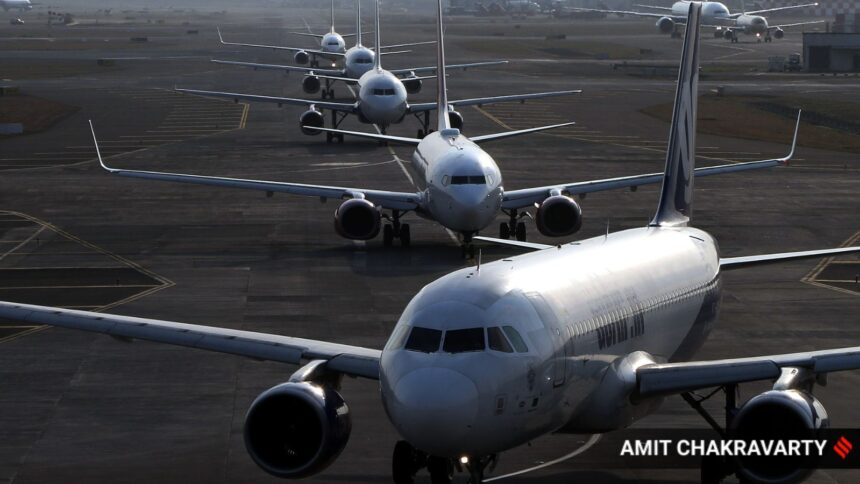India was rated well above the global average in terms of its operations and airworthiness by the International Civil Aviation Organization (ICAO) when the Directorate General of Civil Aviation (DGCA) was last audited in November 2022, with the overall Effective Implementation score being raised to 85.65 per cent from 69.95 per cent in 2018, indicating an improvement in the country’s aviation safety ranking.
The Effective Implementation score of the ICAO, an agency of the United Nations responsible for regulating and establishing standards for civil aviation globally, includes various categories such as legislation, organisation, licensing, operations, airworthiness, accident investigation, air navigation services, and aerodromes. As per the last audit, India scored higher than the global average in each of the eight categories that are covered under ICAO’s Universal Safety Oversight Audit Programme (USOAP).
The assessment of major agencies assumes importance as investigations begin into the crash of Air India’s AI-171 on Thursday in that led to the death of 241 persons aboard the plan in what is the deadliest aviation accident in more than a decade. The accident also led to casualties on the ground as the plane crashed into a medical college building in the vicinity of the Ahmedabad airport.
India scored particularly higher than the global average by the ICAO when it came to operations, with the global average at 72.28 per cent and India at 94.02 per cent. This was even higher than the likes of the US (86.51 per cent) and China (90 per cent), as per their 2024 audits. India also scored higher than the US and China in terms of airworthiness: 97.06 per cent versus 89.13 per cent and 94.83 per cent, respectively. To be sure, the agency has different auditing schedules for different countries, and while India’s last audit was in 2022, the audits for US and China were conducted in 2024.
India is the third-largest domestic aviation market after the US and China, and is also the fastest-growing major aviation market globally.
Later, the US Federal Aviation Administration (FAA)—the foremost aviation regulator globally—retained India’s International Aviation Safety Assessment category as Category 1. As per the FAA’s assessment programme, the DGCA was audited in October 2021 in the areas of aircraft operations, airworthiness, and personnel licensing.
“Based on the positive outcomes of the assessment and follow-ups, the FAA informed DGCA on 12th April 2023 that India meets the international standards for aviation safety oversight of the Chicago Convention & its Annexes and continues to retain FAA IASA Category 1 status which was the last assessed in July 2018. The FAA has appreciated the DGCA stating that DGCA has demonstrated a commitment to ensuring the effective safety oversight of India’s aviation system,” the Ministry of Civil Aviation had said in April 2023.
A Category 1 status with the FAA allows air carriers of that country to operate and expand their services to destinations in the US and codeshare with American air carriers.
The probe into the Air India plane crash is being undertaken by the Aircraft Accident Investigation Bureau, with the investigation to be done in line with protocols set by the ICAO. Aiding the process will be the US National Transportation Safety Board on account of the aircraft that came down being made by American firm Boeing. The UK’s Air Accidents Investigation Branch will also have expert status in the safety investigation on account of the British citizens being on board the aircraft. In addition to these national agencies, Boeing and aircraft engine manufacturer GE are also expected to help in the investigation and provide information about the aircraft as required by the ICAO’s protocols.







